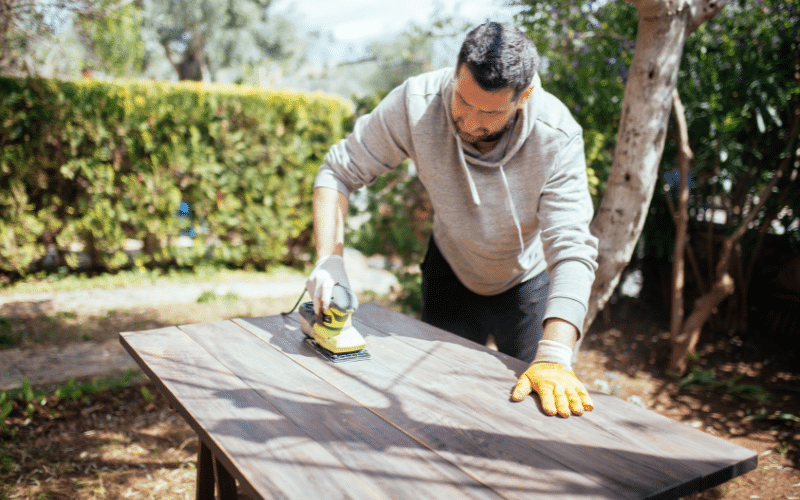What Happens When You Don't Sand Before You Paint?
Our expert team of skilled painters and decorators is here to bring new life to your home or business.
Painting projects can be exciting and daunting, as they can transform your living spaces and breathe new life into your home. However, one crucial step often overlooked or dismissed is sanding the surface before applying the paint. While it may be tempting to skip this time-consuming process, understanding the significance of sanding and its impact on the final result of your paint job is essential.
In this comprehensive guide, we will delve into the world of sanding before painting, exploring why it’s an indispensable part of the surface preparation process. We’ll uncover its benefits, such as achieving a smooth and durable finish, enhancing paint adhesion, and preventing imperfections that can mar the beauty of your freshly painted walls or furniture. So, let’s embark on this journey together and discover the secrets behind the importance of sanding before painting.

The Importance of Sanding Before Painting: Surface Preparation
Understanding the importance of sanding before painting is crucial for achieving a smooth and long-lasting finish. Sanding involves using sandpaper to create an ideal surface for the paint to adhere to. One key aspect to consider is the grit of the sandpaper, which refers to the coarseness of its surface. This choice depends on the condition of the material you want to paint.
For instance, when working with bare wood, it is recommended to begin with a coarse grit to remove imperfections and create a uniform texture. Failure to sand the surface adequately can lead to several issues. Firstly, the paint may not properly adhere to the material, resulting in a patchy and uneven finish. Moreover, without proper surface preparation, any existing blemishes or rough spots will remain apparent even after painting. Therefore, taking the time to sand before painting ensures a smooth surface ready to absorb the paint, allowing for a flawless and professional-looking final result.
Why Sanding Wood is Always Necessary for Repainting and Staining
When achieving a flawless paint job, sanding wood is always necessary, especially when repainting or staining. Sanding is crucial in ensuring a smooth finish and a long-lasting result. Whether working with stained wood or previously painted surfaces, sanding is necessary to create a clean, uniform surface for the new paint.
The new paint may not adhere appropriately without sanding, leading to an uneven finish and potential peeling or flaking. It is important to lightly sand the surface before applying a new coat of paint, as this helps remove imperfections such as bumps or drips and allows the paint to adhere better. The wood filler may sometimes be necessary to fill in deep scratches or gouges.
Additionally, sanding is essential when using certain types of paint, such as oil-based or spray paint, as these paints require a roughened surface to bond properly. However, sanding is still recommended to avoid potential issues, even with water- or latex-based paints. For those looking to prevent sanding altogether, it is important to note that sanding walls or raw wood is essential to ensure that the paint will adhere properly. Whether painting kitchen cabinets or applying high-gloss paint, sanding should never be neglected in pursuing a flawless paint job.
Painting Furniture without Sanding: Exploring Alternatives and Best Practices
When painting furniture, the traditional method often involves sanding the surface, varnishing or applying chalk paint, and then sanding the table again. However, there are alternatives for those who want to skip the sanding step and achieve a beautifully painted furniture piece. Sanding furniture before painting is typically done to remove any previous paint or roughen up the wood’s surface.
But what if you could paint directly on the wood without sanding it first? A few techniques and best practices can be followed to accomplish this. Firstly, you can choose a paint color that will adhere well to the wood before painting. Oil-based paint is recommended as it tends to adhere better to surfaces than water-based paint. Additionally, it is essential to thoroughly clean the furniture before painting to remove any dirt or grime.
In cases where a high-gloss paint needs to be removed, using a liquid deglosser can be a suitable alternative to sanding. By following these techniques and ensuring an adequate amount of paint is applied, you can start painting your furniture without sanding. Ultimately, finding the proper alternative method and using durable paint can achieve a beautiful piece of furniture without the need to sand.
Best Primer: How They Impact the Success of Your Painting Project
When embarking on a painting project, one of the critical factors determining its success is using a primer. Whether painting over a previously painted surface or tackling bare or stained wood, a primer ensures a smooth and long-lasting finish. A primer can save you time and effort, especially when dealing with challenging surfaces such as furniture that you don’t want to sand. However, it is essential to note that in most cases, sanding is necessary before applying a primer.
Unless you are working with a specific type of paint, such as milk paint, which adheres well to unsanded surfaces, it is crucial to sand the surface before painting. By doing so, not only will you achieve a smoother result, but you will also improve the adhesion of the paint. If you skip the sanding step and try to paint directly onto the surface, you risk the paint peeling or chipping over time. To achieve the best results, it is recommended to prime and paint.
Applying a coat of primer before painting ensures a solid base for the top coat, resulting in a more even and professional-looking finish. In some cases, multiple coats of primer may be necessary, mainly when dealing with challenging surfaces or transitioning between colors. Therefore, it is essential to carefully assess the character’s condition and apply the appropriate amount of primer for optimal results.
Conclusion
In conclusion, the significance of sanding before painting cannot be overstated. Proper surface preparation is the foundation for a successful and long-lasting paint. Sanding creates an optimal canvas for paint adhesion, ensures a smooth and durable finish, and minimizes imperfections that can mar the beauty of your painted surfaces.
While alternatives to sanding exist, such as bonding primers or specific paint formulas, it’s essential to understand that each project is unique. Evaluating the condition of the surface, the type of paint used, and the desired outcome will help you determine whether sanding is necessary.
So, the next time you embark on a painting project, embrace the sanding process and recognize its transformative power. Investing time and effort into proper surface making will yield stunning results, with a paint work that stands the test of time, enhancing the beauty of your home for years to come. Happy painting!
Get In Touch
Book Your Appointment
Contact Us
- +44 7479 277887
- [email protected]
- Coventry, United Kingdom
- Monday to Saturday 8 AM to 5 PM
- Get Directions




